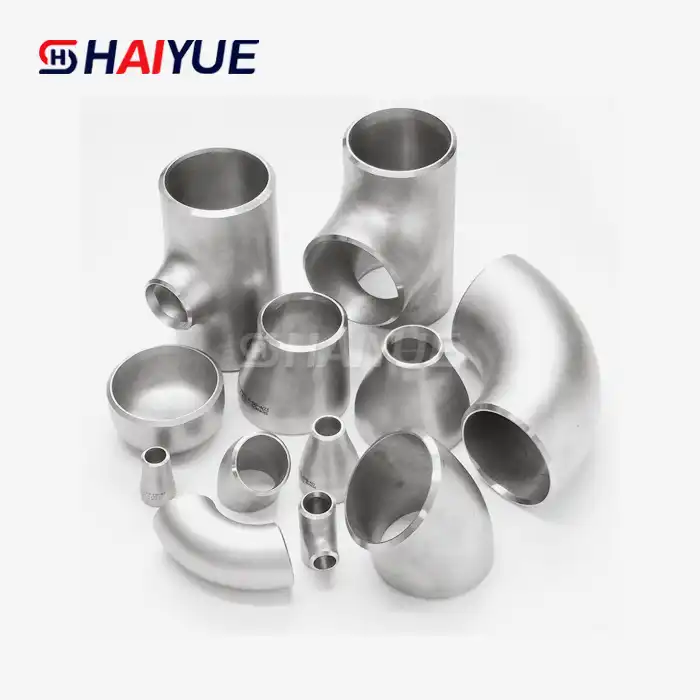- English
- French
- German
- Portuguese
- Spanish
- Russian
- Japanese
- Korean
- Arabic
- Greek
- German
- Turkish
- Italian
- Danish
- Romanian
- Indonesian
- Czech
- Afrikaans
- Swedish
- Polish
- Basque
- Catalan
- Esperanto
- Hindi
- Lao
- Albanian
- Amharic
- Armenian
- Azerbaijani
- Belarusian
- Bengali
- Bosnian
- Bulgarian
- Cebuano
- Chichewa
- Corsican
- Croatian
- Dutch
- Estonian
- Filipino
- Finnish
- Frisian
- Galician
- Georgian
- Gujarati
- Haitian
- Hausa
- Hawaiian
- Hebrew
- Hmong
- Hungarian
- Icelandic
- Igbo
- Javanese
- Kannada
- Kazakh
- Khmer
- Kurdish
- Kyrgyz
- Latin
- Latvian
- Lithuanian
- Luxembou..
- Macedonian
- Malagasy
- Malay
- Malayalam
- Maltese
- Maori
- Marathi
- Mongolian
- Burmese
- Nepali
- Norwegian
- Pashto
- Persian
- Punjabi
- Serbian
- Sesotho
- Sinhala
- Slovak
- Slovenian
- Somali
- Samoan
- Scots Gaelic
- Shona
- Sindhi
- Sundanese
- Swahili
- Tajik
- Tamil
- Telugu
- Thai
- Ukrainian
- Urdu
- Uzbek
- Vietnamese
- Welsh
- Xhosa
- Yiddish
- Yoruba
- Zulu
Are Modified Titanium Wheel Lug Nuts Worth the Upgrade?
Introduction
In the world of performance automotive upgrades, it's not always the large components that define the difference between ordinary and extraordinary—it’s often the details. One such detail is the wheel lug nut, a component most drivers rarely consider until it fails. But for enthusiasts, racers, and high-performance vehicle owners, switching to modified titanium wheel lug nuts is a popular trend driven by performance, weight, and aesthetics.
Modified titanium lug nuts are typically CNC-machined or cold-forged from aerospace-grade titanium (usually Ti-6Al-4V / Grade 5), with design modifications such as skeletonized profiles, vented flanges, anodized finishes, or open-end formats. These variations aim to reduce weight and improve both visual and thermal performance. But how much do they really help—and what are the risks?
Let’s explore the answers through the lens of practical questions buyers are already asking on Google.
How Much Lighter Are Modified Titanium Lug Nuts Compared to Steel?
One of the most immediate and measurable advantages of switching to titanium lug nuts is reduced rotational mass. Titanium, specifically Grade 5 (6Al-4V), is about 40–50% lighter than steel, yet retains comparable tensile strength.
A standard steel lug nut might weigh 35–40 grams, while a modified titanium version may weigh only 15–20 grams.
For a vehicle with 20 lug nuts (5 per wheel), this results in total savings of up to 400–500 grams.
And because this is rotational mass (unsprung weight), the effect is amplified. Engineers generally accept that removing 1 lb of unsprung weight equates to removing 4–5 lbs of static weight.
Modified lug nuts, with hollow designs and minimal contact areas, maximize weight savings without compromising clamp force. This has measurable benefits:
Quicker acceleration
Sharper handling
Better suspension response
More consistent braking
For race cars, time-attack builds, and EVs where weight management is critical, this benefit alone may justify the upgrade.
Do Modified Titanium Wheel Lug Nuts Stand Up to Extreme Heat and Stress?
Yes—when designed and installed properly. Titanium’s natural material properties offer excellent performance in high-stress environments. Grade 5 titanium has:
Tensile strength exceeding 950–1,100 MPa
Heat tolerance up to 400–500°C without structural degradation
Corrosion resistance superior to stainless steel or aluminum
This makes it ideal for use on vehicles subjected to heavy braking, frequent heat cycling, or exposure to moisture and road salt.
That said, modified titanium lug nuts must be used correctly to fully benefit from these strengths. Improper installation or misuse can lead to galling, cracking, or thermal fatigue—especially in motorsports settings.
What Risks Come with Using Modified Titanium Lug Nuts on Performance Vehicles?
Despite their high strength and temperature resistance, modified titanium lug nuts require proper handling. Let's address the three major risks—and the professional-grade solutions for each.
1. Thread Galling and Seizing
Risk Overview:
Titanium is highly reactive under friction and can bind with mating threads, especially during high-torque or high-temperature applications. This is known as galling—a condition where threads seize together, making removal difficult or damaging both nut and stud.
Solutions:
Use a High-Temperature Anti-Seize Compound:
Always apply a thin, even coat of anti-seize (copper- or nickel-based) to the threads before installation. This reduces friction, prevents metal-on-metal contact, and protects threads during torque and heat cycles.
Avoid Dry Installation:
Never install titanium lug nuts dry. Dry threads increase the chance of galling, especially when removed under heat.
Pair with Dissimilar Materials:
Avoid titanium-on-titanium configurations (e.g., titanium lug nut on titanium stud). Instead, pair titanium lug nuts with high-strength steel or Inconel studs, which offer better thermal compatibility and reduce the chance of seizing.
Select Rolled Threads:
Rolled (cold-formed) threads are smoother and denser than cut threads, reducing friction and improving fatigue resistance. Choose titanium lug nuts that advertise rolled threads for optimal long-term use.
2. Heat Expansion Incompatibility and Micro-Stress Fractures
Risk Overview:
Titanium and steel have different coefficients of thermal expansion. When subjected to extreme heat (from aggressive braking or long highway runs), titanium expands differently than the steel studs it’s mounted on. This mismatch can lead to stress fractures, loosened torque, or even stud fatigue.
Solutions:
Use Torque Wrenches (Never Impact Tools):
Apply torque manually with a calibrated wrench, ideally between 80–100 ft-lbs (depending on vehicle). Avoid impact guns, which can over-tighten and cause micro-fractures.
Adjust for Temperature During Torque:
If installing when the hardware is hot, adjust torque downward slightly (~5–10%) to account for thermal expansion. When in doubt, torque at ambient temperature and re-check after heat cycling.
Schedule Regular Inspection After Track Use:
If using titanium lug nuts in racing or heavy-load scenarios, check torque and thread condition after every 1–2 track sessions. Replace any nuts that show signs of deformation, galling, or color change (heat stress).
3. Improper Torque Leading to Failure or Loosening
Risk Overview:
Titanium’s low ductility means it doesn’t stretch like steel under load. This makes it strong but unforgiving—improper torque (over or under) can lead to cracking or loosening.
Solutions:
Follow Manufacturer Torque Specs Precisely:
Never guess torque. Use specs provided by the lug nut supplier or vehicle OEM. Over-torquing can cause cracks or galling; under-torquing risks wheel detachment.
Use Closed-End Nuts for Dust and Moisture Protection:
In daily driving conditions, closed-end lug nuts offer better protection against dirt or water intrusion, which could corrode inner threads or affect torque accuracy.
Use a Thread Gauge or Tap to Clean Studs Before Installation:
Clean, undamaged threads ensure consistent torque readings. Replace damaged studs, especially if titanium nuts are being reused.
Are Modified Titanium Lug Nuts Suitable for All Vehicles?
Yes—but application must be matched to vehicle type, load conditions, and driving environment.
Ideal For:
High-performance sports cars
Lightweight EVs
Racing or track vehicles
Motorcycles
Luxury show builds
Caution With:
Off-road vehicles (risk of impact damage)
Towing or high-load use (if lug nuts are short)
Older vehicles with rusted or inconsistent threads
Always verify:
Thread pitch (e.g., M12x1.25, M14x1.5)
Seat type (conical or ball seat)
Required torque range
Stud material and length
Summary: Are They Worth It?
Let’s answer the questions:
How much lighter?
Titanium lug nuts are up to 50% lighter than steel, reducing 400–500g of rotational mass for improved vehicle dynamics.
Do they withstand heat and stress?
Yes—Grade 5 titanium remains structurally stable under extreme temperatures and high clamp loads.
Are there risks?
Yes, but manageable. Thread galling, thermal mismatch, and torque sensitivity are the top concerns. All can be mitigated through lubrication, proper torque practices, and routine inspection.
For performance-driven users, modified titanium lug nuts offer a premium balance of strength, style, and weight savings—as long as you treat them with the professional care they demand.
Modification and customization physical display:
Grooved closed-end automobile wheel nuts:M12x1.5 M12x1.25 M14x1.5 M14x1.25--45mm
 |
 |
Side hole hollow car wheel nuts:M12x1.5 M14x1.5 M14x1.25--45mm
 |
 |
 |
 |
 |
Non-slip knurled hollow car wheel nut:M12x1.5 M14x1.5 M14x1.25--45mm
 |
 |
 |
 |
 |
Hexagon socket wrench for automobile wheel nuts:M12x1.5 M14x1.5 M14x1.25--35/45/50/60mm
 |
 |
 |
 |
Eccentric gasket automobile wheel nuts:M12x1.5 M12x1.25 M14x1.5 M14x1.25--35mm
 |
 |
Ball pad closed hexagon anti-theft car wheel nuts:M12x1.5--35mm
 |
 |
Spherical gasket closed knurled anti-theft automobile wheel nuts:M12x1.5-48mm
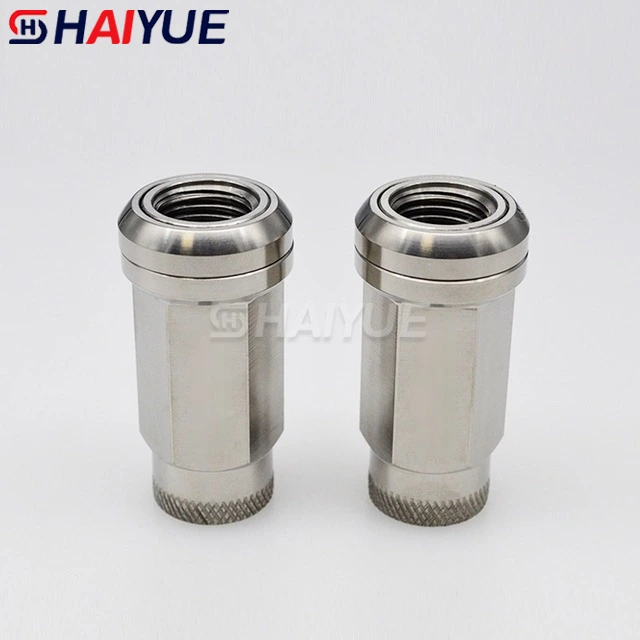
Spherical anti-theft closed-end automobile wheel nuts:M12x1.5-35mm
 |
 |
Spherical knurled non-moving gasket automobile wheel nut:M12x1.5-35mm
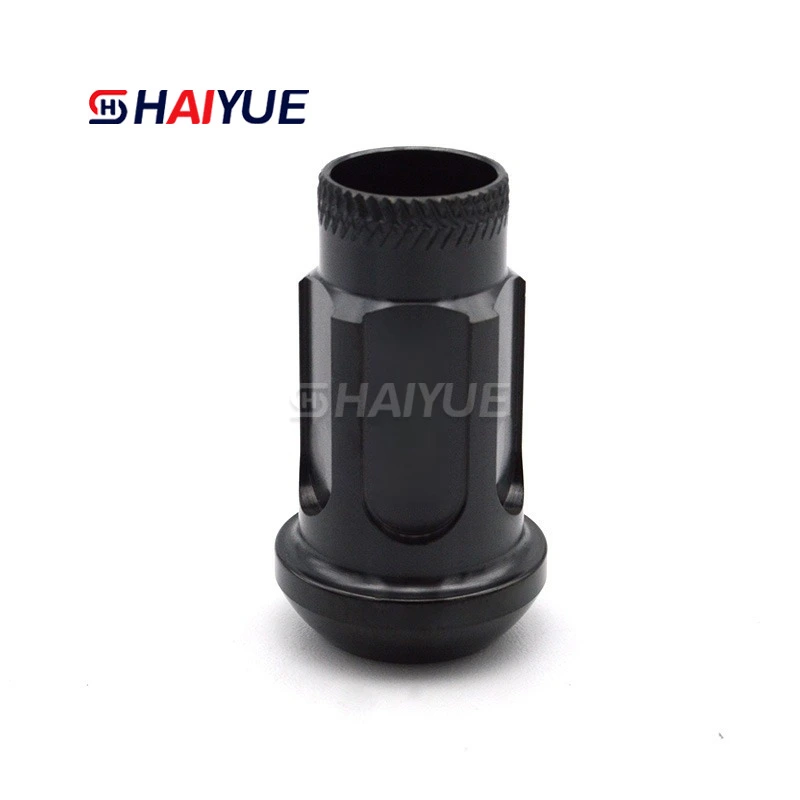
Spherical open automobile wheel nuts:M12x1.5-45mm
 |
 |
Spherical open semi-hollow automobile wheel nuts:M12x1.5--35mm
 |
 |
 |
 |
Spherical open hollow automobile wheel nuts:M12x1.5--35mm
 |
 |
 |
 |
Spherical Washer Automobile Wheel Nuts:M12x1.5--45mm
 |
 |
 |
 |
Spherical modified car wheel nuts:M14X1.5--45mm
 |
 |
External plum anti-theft car wheel nuts:M14x1.5 M14x1.25 M12x1.5--35mm
 |
 |
 |
Duckbill ball anti-theft car wheel nut:M14x1.5 M12x1.5 M12x1.25--35mm
 |
 |
 |
Conical hexagonal open automobile wheel nut:M12x1.25--27 37 45mm
 |
 |
 |
 |
 |
 |
Customized according to the following drawings:
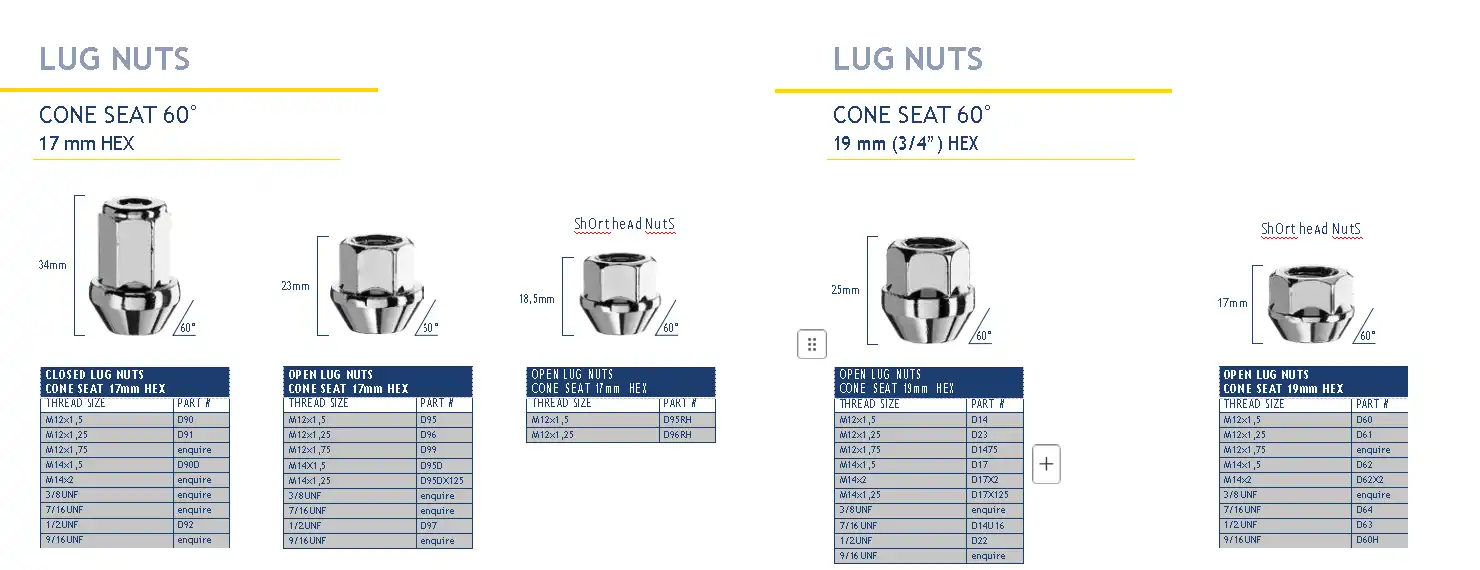

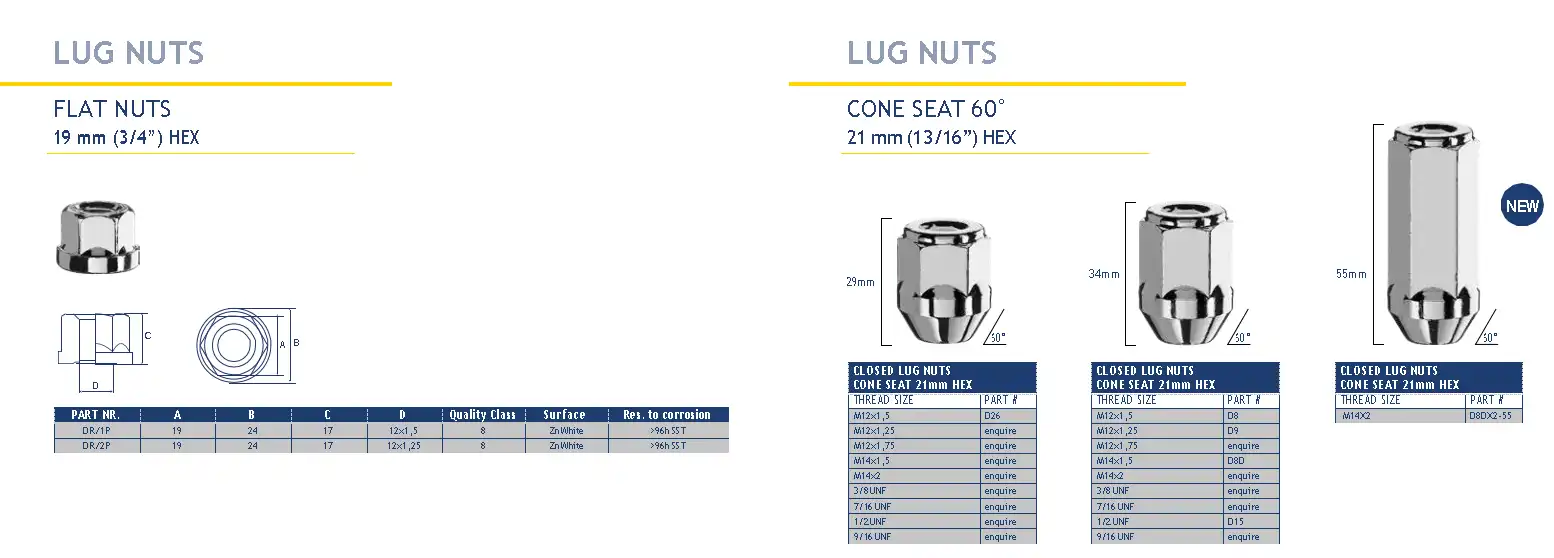

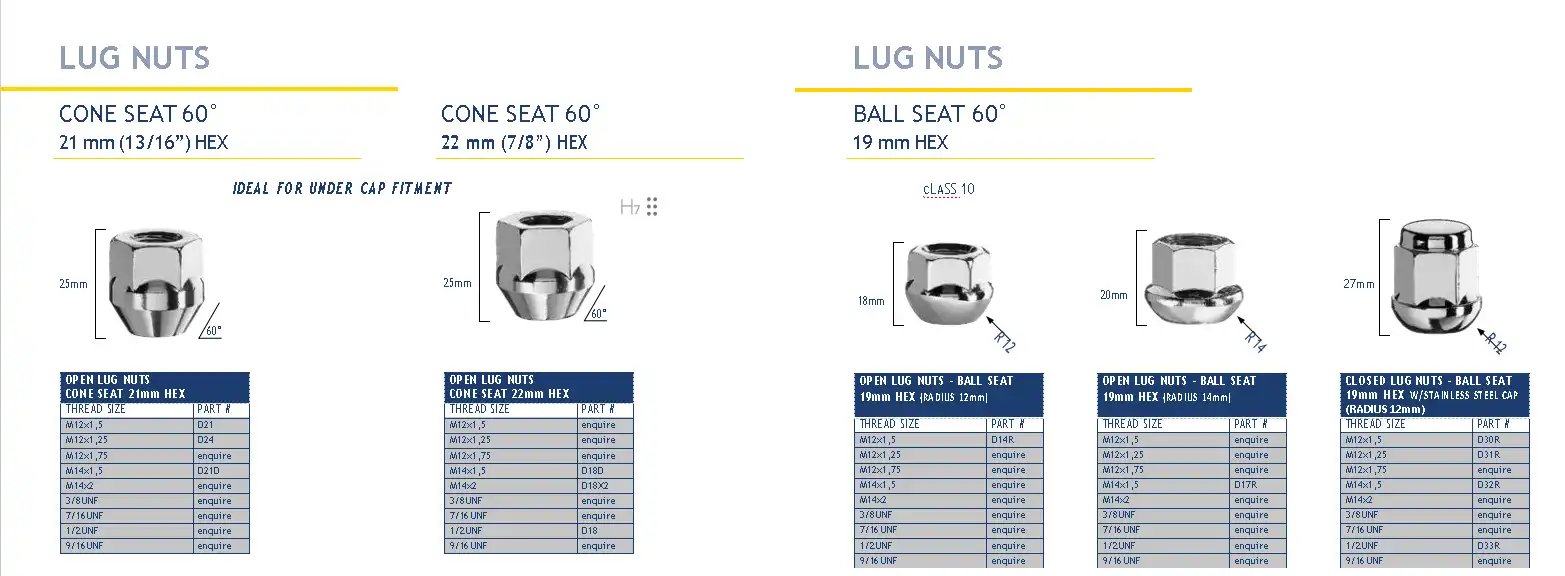

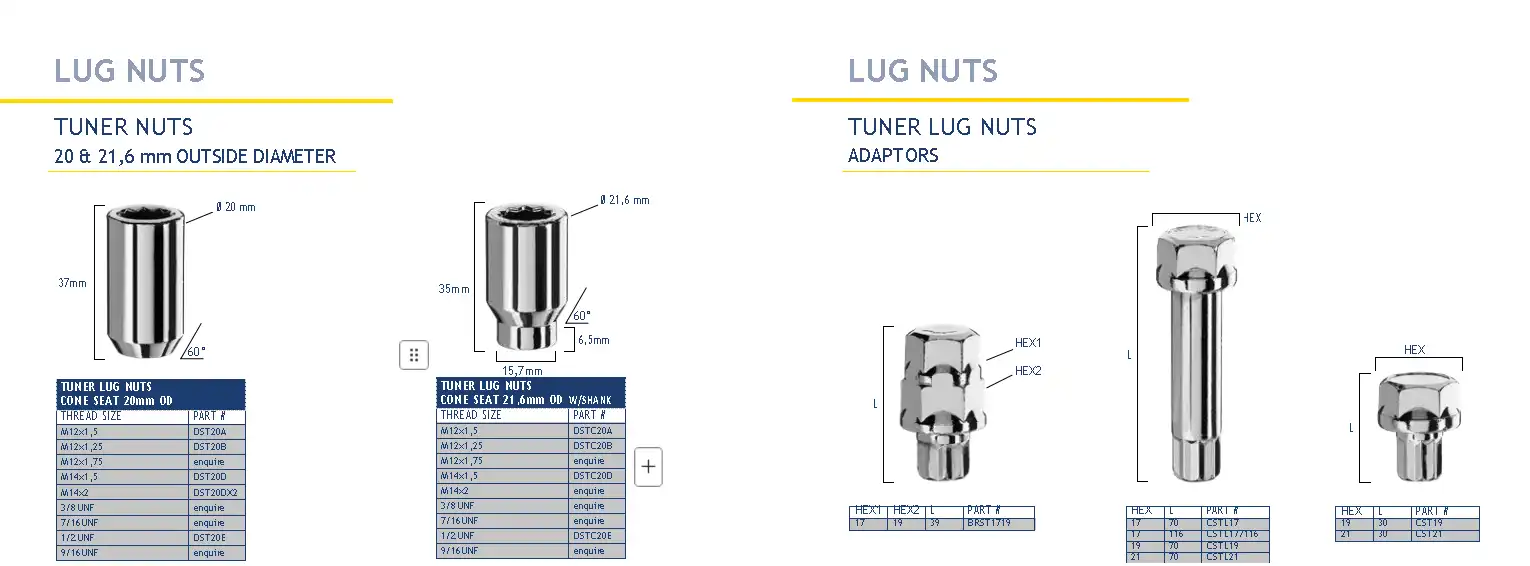
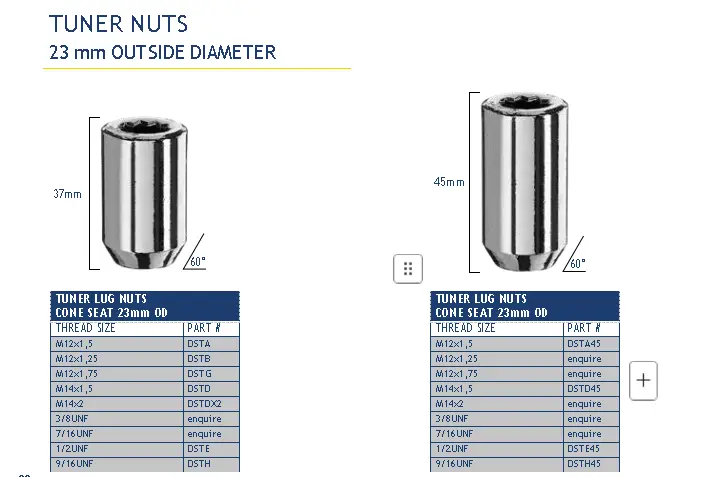
Contact Details
For more information or to request a quote, feel free to contact us:
- Email:Jolina@bjhyti.com
- Phone: +86-18392721678
- Whatsapp:8613772660385

References
ASM Handbook – Properties and Selection of Titanium Alloys
Automotive Engineering Magazine – Fastener Materials in Motorsport
SAE Technical Paper – Thermal Effects on Fastener Clamping Forces
Practical Torque & Load Guidelines – Fastenal Technical Data Sheet
Advanced Materials for Racing Applications – Journal of Applied Mechanics
Metallurgical Analysis of Galling and Thread Seizure – American Welding Society
Thread Forming and Fatigue Life Comparisons – Aerospace Fastener Standards Report
Practical Experiences from Automotive Forums (Engineering StackExchange, Motorsports Reddit, etc.)
Learn about our latest products and discounts through SMS or email
_1736325631111.webp)
_1740384497944.webp)
